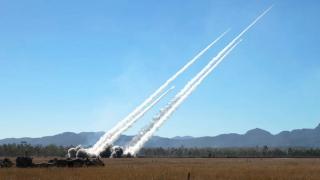AUKUS is one of the most ambitious defence pacts in modern history, but a new report by the USSC looks at how antiquated US legal system settings under the US International Trade in Arms Regulations (ITAR), are standing in the way for full realisation of the AUKUS agenda, potentially limiting Australia's access to key technologies.
The report, Breaking the barriers: Reforming US export controls to realise the potential of AUKUS, by USSC Research Fellow Tom Corben and lead author William C. Greenwalt, Non-Resident Senior Fellow at the American Enterprise Institute, analyses some of the key hurdles to a functioning AUKUS agreement, and ways in which they could be removed.
"Currently, ITAR does not discriminate between a close ally like Australia or Great Britain and another power like Brazil or Latvia," USSC Research Fellow and the report's co-author Tom Corben said.
"Obviously, this system needs a reset to enable AUKUS to develop into its full potential," he said. “The ITAR doesn’t discriminate between different classes of countries or technologies. Everyone and everything is, effectively, treated in the same way under the current regulations. This may have made sense during the Cold War, but that time has long passed."
“The bottom line is that, without reform, these regulations will prevent the sort of genuine collaboration on next-generation defence technologies that AUKUS is supposed to deliver," he said.
AUKUS was announced in September 2021 by the leaders of Australia, the United Kingdom, and the United States as an enhanced trilateral security partnership.
Building on the three countries’ history of cooperation in the Indo-Pacific, AUKUS is aimed at delivering two key elements. First, by delivering a conventionally-armed, nuclear-powered submarine capability for the Royal Australian Navy (Pillar I) and second, developing and fielding joint advanced military capabilities.
Key findings
- ITAR needs urgent attention: ITAR will complicate Australia’s Optimal Submarine Pathway under Pillar I, discourage collaboration on the next-generation of advanced military capabilities under Pillar II, and slow cooperation on existing technology transfer and capability-building initiatives (a category which we call Pillar III).
- Failure to act will hamper deterrence: Policymakers in Canberra and Washington have tried several times before to address barriers to industrial integration and technology sharing, including through the Defense Cooperation Treaty of 2012, and Australia’s addition to the National Technology and Industrial Base in 2017. Another failure to act would carry significant consequences for the three countries’ ability to deter regional conflict.
- AUKUS' full success relies on US reform: For AUKUS to fully deliver on its promise, significant reforms to US export controls are required. Such efforts will be essential to facilitate cooperation at the speed of strategic relevance. These reform efforts will require action at both the US executive and congressional level.
- The White House should issue an executive order to streamline export controls processes and procedures among the AUKUS nations addressing existing specified US technologies, predominately allied-produced technologies, and classes of emerging technology slated for co-development under AUKUS.
- The US Congress should consider legislation that clarifies executive branch discretion to streamline export controls processes and procedures among the AUKUS nations addressing these same categories, enabling broad-based cooperation.





